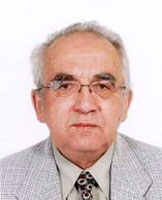Dear colleagues, I do not need to explain how important it is to be able to calculate the ground resistance correctly and quickly. The designer is often faced with this work. There is a whole chapter written on the method of grounding resistance calculation in my book "Practical issues of lightning protection". It seems to have observed all the main issues. Part of the material from the book was later analyzed at webinars. Nevertheless, designers continue asking questions about the coefficients of grounding electrodes utilization. They ask for explanation of where these coefficients came from and how to use them in practical calculations. Such questions make me feel uneasy. I have spent a lot of time and wrote, as it seems to me, enough pages to prove the uselessness of the utilization coefficients. Their occurrence is associated with a major miscalculation in ground resistance calculation technique. Selection of this way leads nowhere, and the sooner the specialist gives up on it, the easier his occupational life will become.

E.M. Bazelian, Doctor of Technical Sciences, Professor;
G.M. Krzhizhanovskii Energy Institute, Moscow;
recognized expert of Russia in the field of grounding and lightning protection
1. Where did the utilization coefficients come from?
Imagine two vertical grounding electrodes of length l and radius r0. They are connected with a horizontal bus. Through it, a current flows in the soil is supplied to the electrodes. A current that flows in the ground is supplied to the electrodes through the bus. The bus itself is in the air and is not connected to the ground. It seemed to someone that the vertical electrodes were connected in parallel. The grounding resistance of a single vertical electrode Rg in an unlimited amount of soil is well known. It can be found in any reference book.
2. Calculation of grounding resistance is a calculation of the electric field
Anyone familiar with the calculations of electrostatic fields knows that the medium there is characterized by permittivity, the source of the field is an electric charge, and the main parameter is the potential created by the totality of electric charges. The field of direct electric current is completely equivalent to electrostatic one.
3. Calculation technique
I don’t know why, but many people are confused by the question of how many times the conductivity of the best soil is less than the conductivity of the metal from which the grounding electrodes are made. The difference here is huge - in about a billion times. In such conditions there is no sense in considering the voltage drop on the grounding buses from the current spreading through them, and therefore, a potential at any point on the grounding device buses with a constant or slowly changing current can be considered the same.
4. Where to find linear leakage current densities
In fact, this is the most complicated question in the grounding resistances calculation technique. With an asymmetrical arrangement, leakage currents differ even in absolutely identical grounding electrodes. To determine them, one has to solve a system of linear algebraic equations. Its size is equal to the number of electrodes in the circuit (or rather, even larger by one more equation).
5. Boundary between ground and air
Like any interstate border, it is very difficult to cross. It must be remembered that formula (6) for the potential is valid only in unlimited amount of soil. And the ground loop electrodes are rarely deepened for more than 0.5 - 1.0 m into the soil. They are very close to the border with the air. Of course, you can give up on the proximity of the border and carry out the calculation, assuming unlimited ground.
6. How does one do that?
It is best to consider specific examples, starting with the simplest one.
Related Articles:
 6. How to do that?
6. How to do that?

